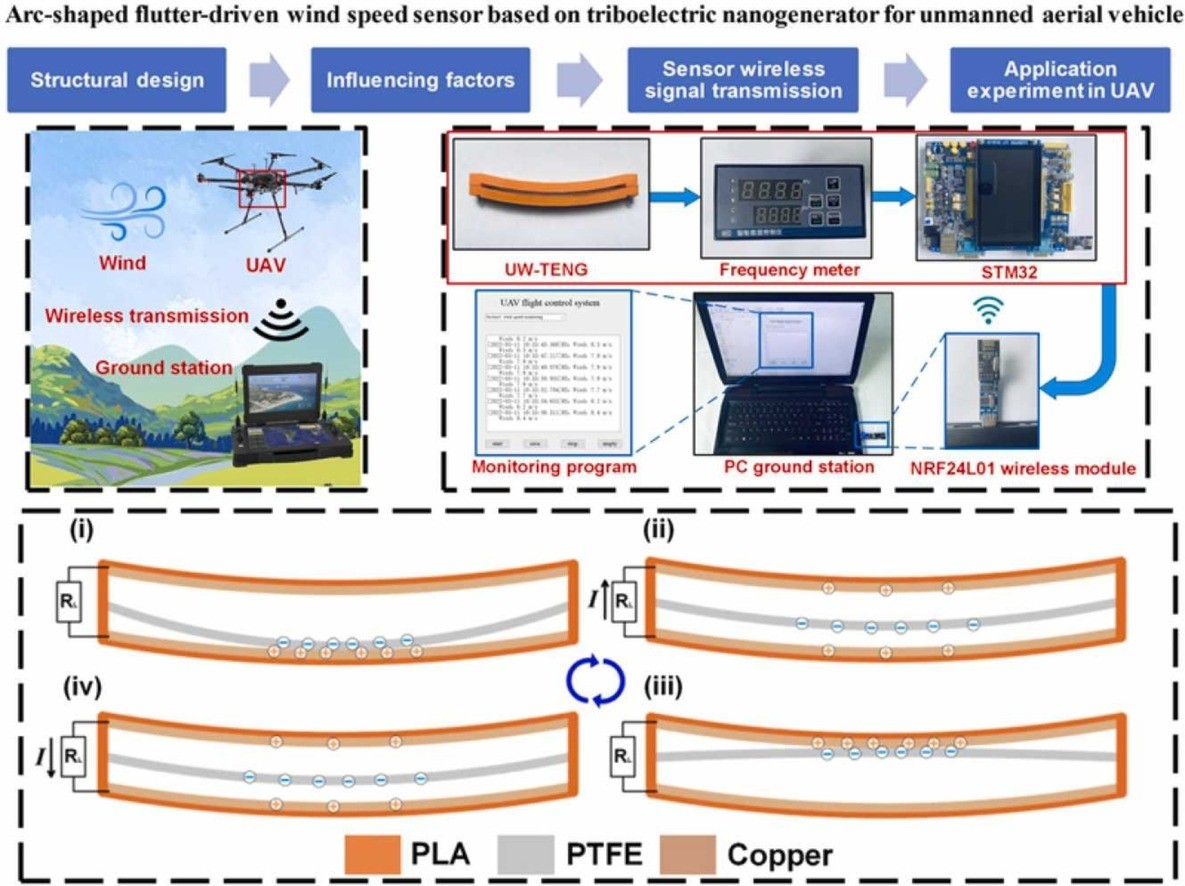Unmanned aerial vehicles (UAVs)have high value for civil and military use and are widely used in various fields. In recent years, the industry has maintained rapid growth and its future development prospects are highly anticipated.Triboelectric nanogenerators havegreat potential in energy shortage crisis alleviation and self-powered sensors and are helpful for UAVs to sense external information in a complex environment. Fuel cells/batteries are green and clean energy which can effectively improve the endurance of UAVs. The application of new energy technology in the UAV field has important research significance and practical value.
Recently, SMAE Prof. Yao Yongming’s team has made new progress in the research on the application of triboelectric nanogeneration technology and fuel cell/battery technology in UAVs. The related research results were published in the internationally renowned academic journalsNano Energy(IF: 19.069) andEnergy(IF: 8.857), with Jilin University as the author’s first affiliation. “Arc-shaped flutter-driven wind speed sensor based on triboelectric nanogenerator for unmanned aerial vehicle” was published inNano Energy, with Prof. Yao Yongming as the first author, and Prof. Cheng Tinghai from Beijing Institute of Nanoenergy and Nanosystems, Chinese Academy of Sciences and Associate Professor Lu Xiaohui from the Changchun University of Technology as co-corresponding authors. Postgraduate student Zhou Zhicong and others participated in the research. Another paper “Grey Markov prediction-based hierarchical model predictive control energy management for fuel cell/battery hybrid unmanned aerial vehicles” was published inEnergy, with Prof. Yao Yongming as the first author and Associate Professor Li Tianyu as the corresponding author. Postgraduate student Wang Jie and others participated in the research. The research was sponsored by the National Natural Science Fund (51805200), Jilin Province Science and Technology Development Plan (20200201057JC), etc.
The research group proposed an arc-shaped flutter-driven wind speed sensor based on triboelectric nanogenerator (AW-TENG) for UAV. Based on the streamlined shape of UAVs, an arc structure design was adopted, which realized contact separation and generated electrical signals through air vibration in the wind field environment. According to its working principle and simulation analysis, researchers conducted an experimental analysis of three influencing factors of plate spacing, radian and radian direction to determine its optimal structure. The sensing performance was verified, which showed that AW-TENG had good goodness of fit and other sensing properties in the wind speed range of 6-20m/s. On this basis, the application experiment of the wireless wind speed transmission was carried out. The new sensor has a good application prospect in the UAV field. The research has expanded the application field of the TENG sensor and provided technical support for TENG wireless self-powered sensing.

In another paper, the group proposed an energy management strategy based on grey Markov’s hierarchical model predictive control to address the energy management of fuel cell-battery hybrid power UAVs. The strategy is divided into the trajectory optimization layer and the control layer. The trajectory optimization layer is optimized according to the economic cost of hybrid power to obtain the reference trajectory of the battery state of charge, and the control layer follows the reference trajectory to control. A grey Markov power prediction model was proposed to predict the load power of UAVs under complex working conditions. The research showed that the proposed control strategy can save economic costs and effectively improve the endurance of UAVs.
